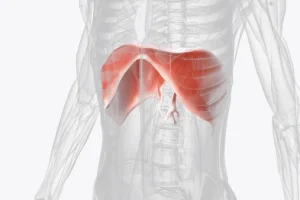The Diaphragm: What Does It Mean?

After going through several voice tools to use and to help you sing at your best, I was thinking about where things could go next (if you haven’t checked out the Tool Time articles, find them here). The “What Does It Mean?” series is meant to demystify some of the commonly used lingo in the voice studio and beyond. I hope to give evidenced information about topics that are often misunderstood and cite sources so you can dive deeper. This first article will discuss everyone’s favorite muscle of respiration: the diaphragm.
So, what is the diaphragm?
The diaphragm is a primary muscle of respiration (breathing) along with the external intercostals (outer muscles between the ribs). It is large and shaped like a dome and aids the lungs in expansion and retraction. From Medlineplus.gov, “Upon inhalation, the diaphragm contracts and flattens and the chest cavity enlarges. This contraction creates a vacuum which pulls air into the lungs. Upon exhalation, the diaphragm relaxes and returns to its domelike shape, and aid is forced out of the lungs.” If you place your hands right under your ribs in the front and inhale, you can feel the contraction and flattening, and then the release as you exhale. Here is a video displaying the diaphragm’s movement.
So, how do we use the diaphragm in singing?
If you’ve had voice lessons, you may have heard “sing from your diaphragm,” “tighten your diaphragm to hit that note,” or something along those lines. The issue with some of these phrases is the idea of tightening or holding a muscle that is seen and documented as an involuntary muscle. Involuntary in this case means that we have little to no direct control of activating it. While there are practitioners that say they have voluntary control of the muscle, many use cases lead to the idea that we do not in a substantive way. So, the question of “how do I use the diaphragm to help my singing?” comes into play. In my own teaching and singing, the goal is to use as little effort to produce and consistently replicate the sounds I need for my performances. Effort usually involves musculature and the movement of air from the lungs through the vocal folds (there will be a future article about the vocal folds).
Since the diaphragm is primary in breathing, which is vital for living, I prefer to use what is already working efficiently and train sustained use of the air that will be exhaled since we typically have longer phrases to sing as classical singers. Aiming to take a breath that does not constrict in the torso and the throat is key and allowing the exhale to be more measured works best for me. Does this mean that there is never extra engagement in the diaphragm area and abdominals? Of course not. I aim to use the least amount of musculature to find best way to move air through my vocal folds. While we don’t want the diaphragm to just collapse, we also don’t want to hold it to the point that it is affecting our sound. This part may sound difficult, but if you have issues finding this kind of efficient release, work with your teacher on exercises to train the muscles and brain response. The use of the diaphragm is often better suited to a less is more situation.
What’s next?
If reading this article helped and you have other items you are wondering about, feel free to reach out and I can put them on the list for the articles. Always remember that the goal of singing is for ease and effectiveness!
